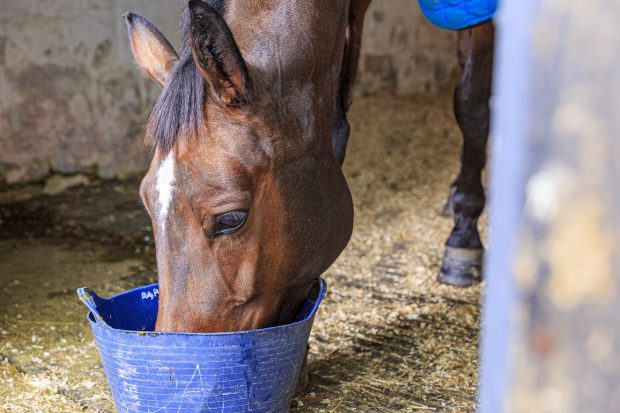Q: I’m planning to compete my 16hh Thoroughbred in dressage and show jumping. I come from a farming family and feed a diet based on our own hay, oats and barley. I was at a feeding talk recently and the nutritionist said a cereal-based diet was not balanced. How can ensure my horse receives a balanced diet?
Equine nutritionist, Christine Smy replies: The nutritionist was correct. There will be many deficiencies in a cereal and hay diet. Obviously the amount of cereals you are feeding will have to be taken into account but, generally speaking, your diet will be low in calcium, vitamins and minerals, and protein.
Calcium
Horses require twice as much calcium as phosphorus in the diet or, in other words, a 2:1 calcium (ca) to phosphorus (p) ratio.
This ratio can be lower, but should not be below a 1:1 calcium:phosphorus ratio as this will reduce calcium absorption. Most hays have a ca:p ratio of 2:1, however cereals tend to have an inverted ratio, that is they contain more phosphorus than calcium, usually a ratio of about 1:4.
High calcium products such as alfalfa (which has a ca:p ratio of 5:1) or limestone flour can balance your horse’s diet.
You would need to feed around the same weight of alfalfa as cereals, but bear in mind that alfalfa has a relatively good energy level. Limestone flour contains higher levels of calcium and you would need to add somewhere between 30-50g a day.
If you have your horse’s diet analysed by a nutritionist you will probably find the calcium level is well above recommendations when a supplement has been added.
This is because the phosphorus levels are high and as you need twice as much calcium to phosphorus, the calcium levels are elevated.
Minerals and vitamins
Other minerals and vitamins apart from calcium and phosphorus will be lacking in a hay and cereal diet. These include sodium, chloride, copper, zinc, vitamin D and E.
The first two can be easily rectified by adding a tablespoon (around 30g) of salt to the diet. To replace the others, it would be advisable to provide a good, broad spectrum supplement rather than adding individual minerals, as it is difficult to gauge the actual requirements and you may be affecting the absorption of other related minerals.
The minerals and vitamins in a broad spectrum supplement have been added at correct levels, which takes away the worry of whether or not you are under- or over-feeding specific nutrients. Choose a supplement from a reputable company and preferably one for a working, rather than a resting horse.
Good quality protein
Amino acids are the building blocks of proteins. Some can be manufactured by the horse and some can’t. The latter are essential amino acids and should be provided in the feed. Most hay contains adequate amino acids but cereals are low, particularly in the amino acid lysine.
Many feed companies produce cereal or oat balancers to balance up a horse’s diet. These tend to be available as 50% (50% of the concentrate ration as cereals and 50% as balancer) or as 30% (70% cereals and 30% balancer) ratios.




